Preliminary Analysis of Multi-Typhoon Influence on Hainan Province and Its Circulation Background in Autumn 2020
DOI: 10.23977/envcp.2022.010103 | Downloads: 31 | Views: 2719
Author(s)
Chenxiao Shi 1,2, Chunxiang Shi 3, Tao Zhang 3, Jianhua Du 1,2, Honghui Zheng 1,2, Zhenli Chen 1,2
Affiliation(s)
1 Hainan Province Meteorological Information Center, Haikou, Hainan, China
2 Key Laboratory of South China Sea Meteorological Disaster Prevention and Mitigation of Hainan Provinces, Haikou, Hainan, China
3 National Meteorological Information Center, Beijing, China
Corresponding Author
Chunxiang ShiABSTRACT
In order to understand some factors that many typhoons will affect the climate background and atmosphere and ocean of Hainan Province in the autumn of 2020, this paper makes a preliminary analysis of the characteristics and circulation background of many typhoons in the autumn of 2020 by using multi-source merged products, China's first generation reanalysis products (CRA-40), satellite data and ground observation data. During the period from October to November in 2021, the location of the subtropical high is east-north compared with previous years, and its intensity was weak. As a result, under the guidance of the southeasterly airstream at the edge of the subtropical high, eight typhoons converged in Hainan Province and western Guangdong, and the vertical velocity over them was basically negative, resulting in a continuous and strong wind and rain process in this area. From October to November, positive SST anomalies near the equatorial western Pacific and the South China Sea provide a steady stream of energy for typhoons in the South China Sea and the western Pacific Ocean, and negative OLR anomalies cause large-scale strong convective activities. Combined with the actual observation, it can be seen that the area of strong convective activity is mainly concentrated in the areas of 5-20°N and 110-150°E, which is the place where the sea temperature is abnormal in 2020 and the place where typhoons originated.
KEYWORDS
Multi-typhoon, circulation background, subtropical high pressure, cold air, SST pleion, OLR negative anomaly areaCITE THIS PAPER
Chenxiao Shi, Chunxiang Shi, Tao Zhang, Jianhua Du, Honghui Zheng, Zhenli Chen, Preliminary Analysis of Multi-Typhoon Influence on Hainan Province and Its Circulation Background in Autumn 2020. Environment and Climate Protection (2022) Vol. 1: 24-37. DOI: http://dx.doi.org/10.23977/envcp.2022.010103.
REFERENCES
[1] Defu Liu, Fengqing Wang. Typhoon/Hurricane/Tropical Cyclone Disasters: Prediction, Prevention and Mitigation. Journal of Geoscience and Environment Protection, 2019, 7, 26-36.
[2] Kennedy A B , Mori N , Zhang Y , et al. Observations and Modeling of Coastal Boulder Transport and Loading During Super Typhoon Haiyan. Coastal Engineering Journal, 2016, 58 (1): 1640004.1-1640004.25.
[3] Rebecca S, Stephanie T, Samantha K, et al. Preliminary Assessment of Hurricane Harvey Exposures and Mental Health Impact. International Journal of Environmental Research & Public Health, 2018, 15 (5): 974.
[4] Chen Lianshou, Ding Yihui. Generality of the Western Pacific Typhoon. Beijing: Science Press, 1979, 1.
[5] WANG Chengwei, QI Duo, XU Yue, ZHANG Libao, HU Zhongming, ZHOU Ying, WANG Qingyu. Analysis of Rainstorm Induced by Interaction between Typhoon Chan-hom (2015) and Cold Air in Northeast China. Plateau Meteorology, 2017, 36 (5): 1257-1266.
[6] Chen Lianshou, Xu Yinglong. Review of Typhoon Very Heavy Rainfall in China. Meteorological and Environmental Sciences, 2017, 40 (1): 3-10.
[7] LI Qiang, LIU De, WANG Zhong, LIAO Jun, ZHAI Danhua. Case Analysis on Heavy Rainstorm Caused Southwest Vortex under the Influence of Long-Distance Typhoon. Plateau Meteorology, 2013, 32 (3): 718-727.
[8] Lei Xiaotu. Progress of Unmanned Aerial Vehicles and Their Application to Detection of Typhoon Cyclone. Advances in Earth Science, 2015, 30 (2): 276-283.
[9] HUANG Jing, LI Hai-ying, WU Jia-hao. Wind Field Structure of the Tropical Cyclone Pabuk by Means of Wind Profiler Data. Guangdong Meteorology, 2009, 31 (1): 5-8.
[10] Liang Hongsheng, Xie Jianqun. Causes of Heavy Rainfall in Eastern Guangdong Induced by Tropical Storm "Lianhua". Journal of Meteorological Research and Application, 2009, 30 (a02): 102-104.
[11] Meng Zhaozhen, Chen Jian, Han Shenyou, Lai Zhenquan, Zhai Liping, Lin Kaiping. Characteristic Analysis on Rainstorms of Typhoon Remnant Vortexes in Guangxi. Journal of Meteorological Research and Application, 2017, 38 (1): 20-25.
[12] Zheng Fengqin, Wang Shengfan, Zhao Jinbiao, et al.Analysis on the characteristics of typhoon Extreme Precipitation and the anomaly ofenvironmental parameters in Guangxi. Journal of Meteorological Research and Application, 2021, 42(4): 07-13.
[13] Zhou Guanbo, Ran Lingkun, Gao Shouting, et al. High-resolution numerical simulation and diagnostic analysis of dynamic structure of typhoon “Morakot”. meteorology, 2015, 41 (6): 727-737.
[14] Tang Yushuang. Analysis of mesoscale characteristics of radar rain belt: Typhoon “Morakot” (2009). Taoyuan: National Central University of Taiwan Province, China, 2010.
[15] Wang Xiao, Yu Hui, Bao Xuyi, et al. Analysis on extreme characteristics of the precipitation brought by typhoon “Titow” (1323). Journal of the Meteorological Sciences, 2017, 37 (4): 514-521.
[16] Chen Yan, Wu Yu, Wang Tianwei. Analysis of the Intensification Causes of Super Typhoon "Rammasun" (1409) in the Coastal Waters. Chinese journal of tropical agriculture, 2020, 40 (1): 120-126.
[17] Chen Hong. The Influence of Typhoon on the Economy of Guangdong Province —— Based on CGE Model. NanJing university of information science &technology, 2021.
[18] Dong Meiying, Chen Feng, Qiu Jinjing, et al. 2021. Impact of Spectral Nudging Technique Driven with ECMWF Data on the Fine Numerical Prediction of Super Typhoon Lekima (2019) in Zhejiang Province . Chinese Journal of Atmospheric Sciences (in Chinese), 45 (5): 1071−1086.
[19] Ding Yihui, Fan Huijun, Xue Qiufang, Chen Guixiang. A preliminary study on the simultaneous development of multiple typhoons in the tropical zone. Scientia Atmosphrica Sinica, 1977 (2): 89-98.
[20] ZHANG Chunyan, WANG Li, SUN Mingming, Zhang Jianhai. Tentative analysis on multi-typhoon characteristics and atmospheric circulation background in the midsummer of 2012. Torrential Rain and Disasters, 2012, 31 (4): 298-305.
[21] Yang Zu-fang, He Shi-xiu. A Circulation Pattern Favorable for the Frequent Occurrence of Typhoon over Southwest Pacific. Scientia Atmospherica Sinica, 1982, 6 (3): 293-300.
[22] William M. Gray, Tropical cyclone genesis in the western North Pacific. JMeteor Soc Japan, 1977, 55 (4): 465-482.
[23] Xu Jinjing, Li Hongtu. Climatic analysis of typhoon activities in Fujian in 1999. Marine Forecasts, 2000, 17 (4): 28-33.
[24] Peng Benxian. Analysis of Typhoon in South China Sea in October 1983. Journal of Guangxi Meteorology, 1985 (04): 6-9.
[25] Liu Na, Chou Shilian, Duan Mingguo, Wang Zhiyu. Analysis of circulation characteristics of multiple typhoons in Jilin Province in 2018 . Meteorological Disaster Prevention, 2021, 28 (1): 1-5.
[26] Xie, P. P., and A. Y. Xiong, A conceptual model for constructing high-resolution gauge-satellite merged precipitation analyses, Journal of Geophysical Research, 2011,116, doi: 10.1029/ 2011JD016118.
[27] Qingyun Duan, Newsah K. Ajami, Xiaogang Gao, Soroosh Sorooshian. 2007. Multi-model ensemble hydrologic prediction using Bayesian model averaging. Elsevier, Adv. Water Resource, 30: 1371-1386.
[28] Pan Yang, Shen Yan, Yu Jingjing, Xiong Anyuan. An Experiment of High-Resolution Gauge-Radar-Satellite Combined Precipitation Retrieval Based on the Bayesian Merging Method. Acta Meteorologica Sinica, 2015, 73 (1): 177-186.
[29] Pan Yang, Shen Yan, Yu Jingjing, Zhao Ping. Analysis of the Combined Gauge-Satellite Hourly Precipitation over China Based on the OI Technique. Acta Meteorologica Sinica, 2012, 70 (6): 1381-1389.
[30] Yu Jingjing, Shen Yan, Pan Yang, Zhao Ping, Zhou Zijiang. Improvement of Satellite-based Precipitation Estimates over China Based on Probability Density Function Matching Method. Journal of Application Meteorological Science, 2013, 24 (5): 544-553.
[31] Y Shen, P Zhao, Y Pan, J Yu. 2014. A high spatiotemporal gauge-satellite merged precipitation analysis over China. J Geophys Res, 119, doi:10.1002/2013JD020686.
[32] X. Liang, L. P. Jiang, Y. Pan, Chunxiang Shi, 2020: A 10-yr global land surface reanalysis interim dataset (CRA-Interim/Land): Implementation and preliminary evaluation. J. Meteor. Res., 34, 101–116. doi:10.1007/s13351-020-9083-0.
[33] B. Zhao, B. Zhang, C. X. Shi, J. W. Shi, 2019: Comparison of the global energy cycle between Chinese reanalysis interim and ECMWF reanalysis. J. Meteor. Res., 33, 563–575. doi: 10.1007/s13351-019-8129-7.
[34] C. X. Li, T. B. Zhao, C. X. Shi, Z. Q. Liu, 2020: Evaluation of daily precipitation product in China from the CMA global atmospheric interim reanalysis. J. Meteor. Res., 34, 117–136. doi: 10.1007/s13351-020-8196-9.
[35] Zhao D, Zhang L, Zhou T, Liu J. Contributions of Local and Remote Atmospheric Moisture Fluxes to East China Precipitation Estimated from CRA-40 Reanalysis. Journal of Meteorological Research, 2021.
[36] Y. B. Zhang. Quick glance at the 2020 China Climate Bulletin. China Meteorological News, 2021-02-10 (003).
[37] Charles R. Holliday, Aylmer H. Thompson. Climatological characteristics of rapidly intensifying typhoons. Monthly Weather Review, 1979, 107 (8): 1022-1034.
[38] SHI Shun-ji, YU Jin-hua, ZHENG Li-xin. An Analysis of the Environment Effect on Super Typhoon Sepat (0709). Journal of Oceanography in Taiwan Strait, 2009, 28 (01): 135-141.
[39] Chan J.C.L., Shay L K., Duan Y H. Tropical cyclone intensity change from a simple ocean-atmosphere coupled model. Journal of the Atmospheric Sciences, 2001, 58 (2): 154-172.
[40] Xue Gengyuan, Zhang Jianhai, Chen Hongmei, Yu Hai. Analysis on Causes of Strengthening of Super Strong Typhoon Saomai (0608) and Numerical Experiments of the Impact of SST on Its Intensity. Quaternary Sciences, 2007 (03): 311-321.
[41] CHEN Yan, WU Yu, WANG Tianwei. Analysis of the Intensification Causes of Super Typhoon “Rammasun”(1409) in the Coastal Waters. Chinese Journal of Tropical Agriculture, 2020, 040 (001):120-126.
[42] Kaplan J, Demaria M. Larger-scale characteristic of rapidly intensifying tropical cyclones in the north Atlantic basin. Wea Forecasting, 2003, 18 (6): 1093-1108.
[43] Xie An, Chen Longxun, Murakami. The Seasonal Characteristics and Interannual Variability of the Tropical Circulation Shown by the Earth’s Outward Long-wave Radiation (OLR) Data. Acta Oceanologica Sinica, 1988 (01): 38-45.
[44] Xie An, Ye Qian. Relationship between OLR Low-frequency Oscillations and the Formation of Typhoon over the Western Pacific. Quarterly Journal of Application Meteorological, 1994 (02): 143-150.
[45] Jiang Shangcheng, Zhang Weidong. The Climatic Characteristics of the Subtropical High Pressure over the Northern Pacific Revealed by OLR. Geographical Research, 1994 (02): 27-33.
[46] DUAN Li, JIANG Shang-cheng. Use of Monthly Mean OLR Departure in Investigating the Landing of TC and Its Impact on the Southern China in Summer. Journal of Tropical Meteorology, 2001 (03): 258-264.
| Downloads: | 666 |
|---|---|
| Visits: | 39024 |
Sponsors, Associates, and Links
-
International Journal of Geological Resources and Geological Engineering
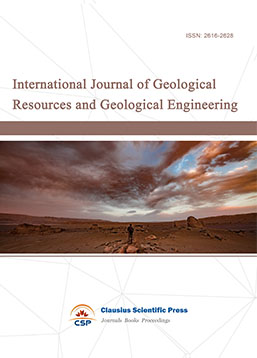
-
Big Geospatial Data and Data Science

-
Solid Earth and Space Physics

-
Journal of Cartography and Geographic Information Systems

-
Environment, Resource and Ecology Journal
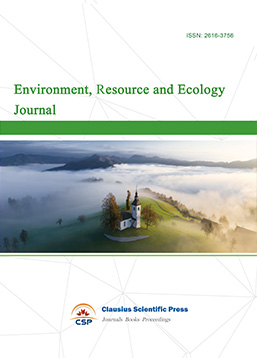
-
Offshore and Polar Engineering

-
Physical and Human Geography
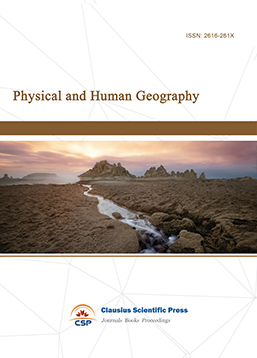
-
Journal of Atmospheric Physics and Atmospheric Environment
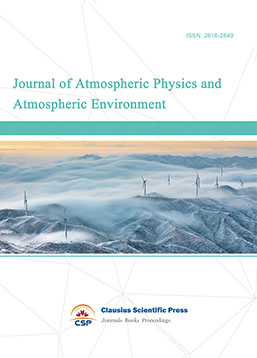
-
Trends in Meteorology

-
Journal of Coastal Engineering Research
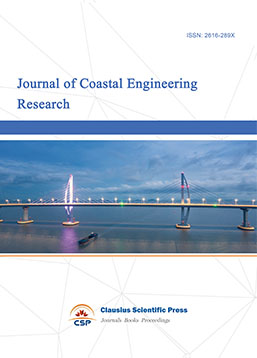
-
Focus on Plant Protection
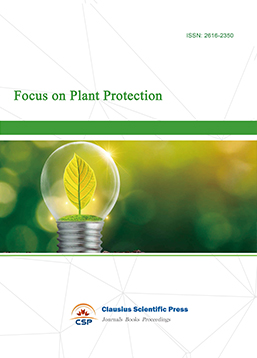
-
Toxicology and Health of Environment
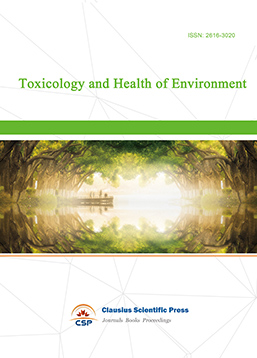
-
Geoscience and Remote Sensing
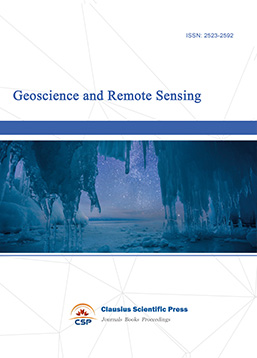
-
Advances in Physical Oceanography

-
Biology, Chemistry, and Geology in Marine
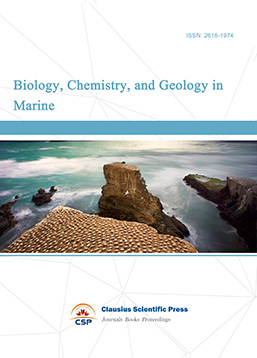
-
Water-Soil, Biological Environment and Energy

-
Geodesy and Geophysics

-
Journal of Structural and Quaternary Geology
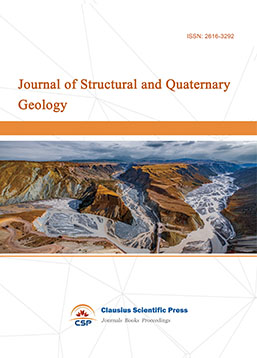
-
Journal of Sedimentary Geology

-
International Journal of Polar Social Research and Review


 Download as PDF
Download as PDF